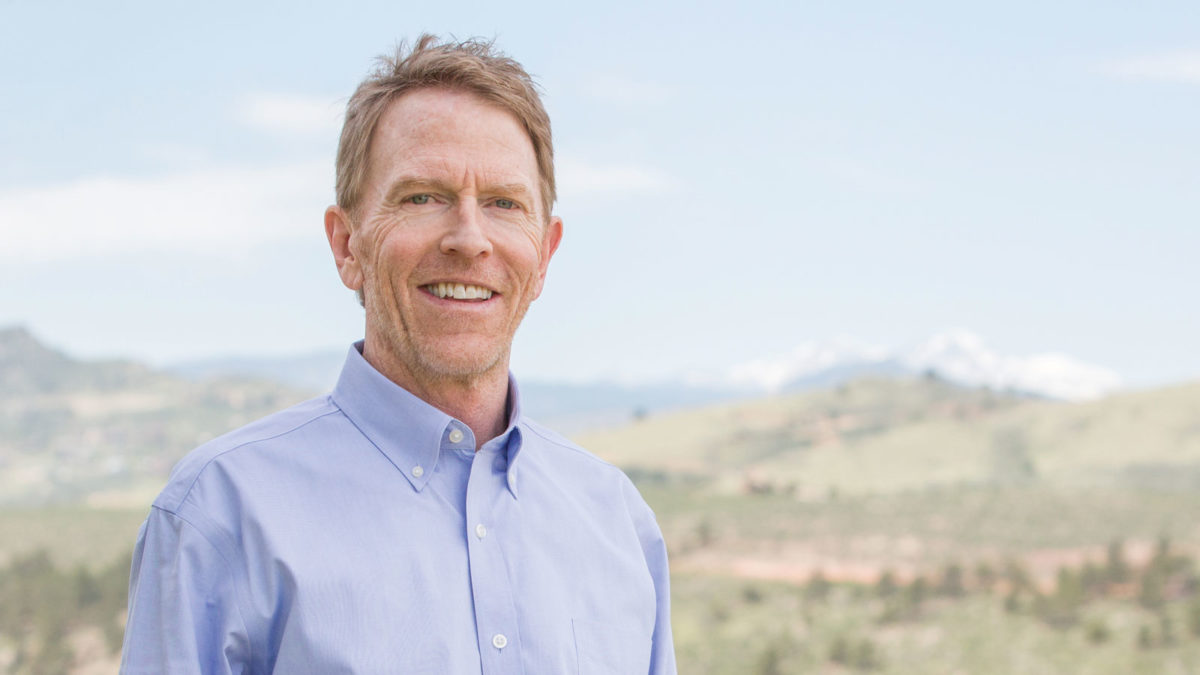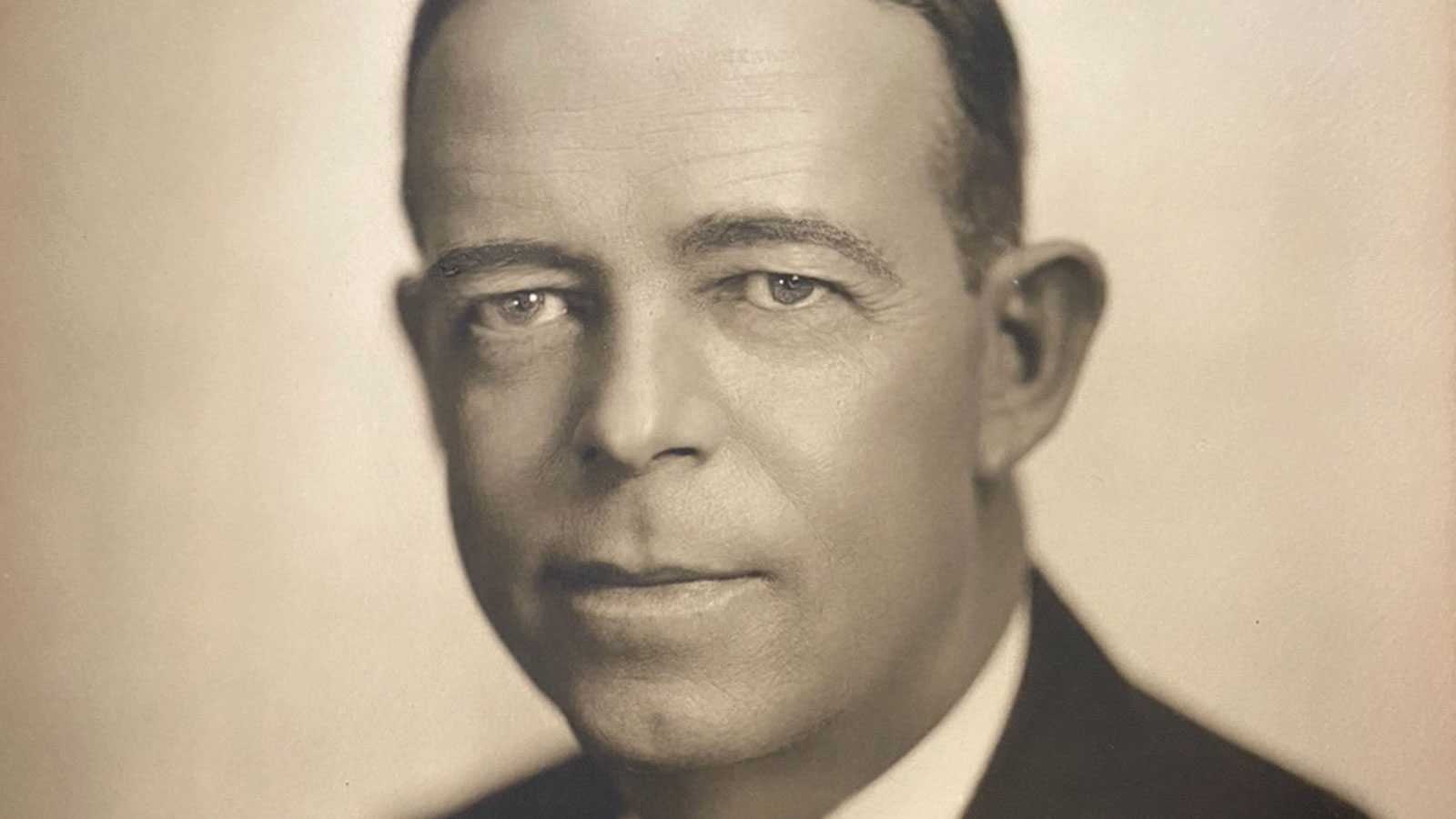
The Gast Family
Four Generations of Colorado Lawyers
April 2022
Download This Article (.pdf)
It was a skeptical inquiry. “So, you’re telling me that four generations of the Gast family have practiced law in Colorado? Now why on earth would any family choose to lawyer that long?” The questioning then took a somewhat humorous turn, hinting that the Gasts must have been so short on math and science skills that they became lawyers by default. Truth be told, the tradition of lawyering in the Gast family has a far different foundation—one based on a commitment to serving and helping others.
I am both proud and privileged to be a fourth-generation Colorado lawyer. From Pueblo to Fort Collins, a Gast has practiced law in Greater Colorado1 for 146 years. The story begins back in the 19th century.
Charles E. Gast
My great-grandfather, Charles E. Gast, was born December 12, 1848, in Lancaster, Pennsylvania, to a German immigrant cobbler, Christian, and his wife, Maria. Charles veered off the cobbler career path, obtaining his BA from Franklin and Marshall College in 1868 and his law degree from Albany Law School in 1870. He then began practicing law in Lancaster but, hearing the call to head westward, he moved to Pueblo in 1873. At that point Colorado was just a territory, some three years shy of statehood, and Pueblo had all the hallmarks of a frontier town from the dusty alkali streets to its Wild Western saloons. As described by one local resident of the day:
Occasionally, the cowboys would come in off the range and fill up on liquor, ride up and down the wooden sidewalks on their horses and in through the swinging doors of saloons, letting off a few shots and whoops to intimidate the more-timid citizens.2
What better place to practice law? Charles hung out his shingle in partnership with Henry Thatcher (who later became the first chief justice of the Colorado Supreme Court), and subsequently practiced with my grandfather, Robert S. Gast.
Charles apparently was quite the talker but also had a studious side. As noted in a 1901 publication on the history of Colorado:
His oratorical gifts seem designed for public service, but his tastes are modest, and those same gifts are founded in the broad culture he has acquired through habitual quiet study and reflection.3
A historical text from 1913 provides this telling description of Charles (steeped in the vernacular of the day):
As a lawyer he ranked with the ablest; as a citizen he was honorable, prompt and true to every engagement; as a man he held the honor and esteem of all classes of people and political proclivities; as a husband and father he was a model worthy of all imitation, unassuming in his manner, sincere in his friendships, steadfast and unswerving in his loyalty to the right.4

Robert S. Gast
Charles and his wife, Lillie, had one child—my grandfather, Robert S. Gast (born September 27, 1879). After growing up in Pueblo, he trekked east to attend Yale University (BA 1902) and Columbia Law School (LL.B. 1905), then quickly returned to his roots in Pueblo to practice law. He began practicing first with my great-grandfather and then with Alva B. Adams (who later became a US Senator) under the firm name of Adams & Gast. The following vignette from a 1918 publication provides a glimpse of my grandfather’s skills as a lawyer:
The zeal with which he has devoted his energies to his profession, the careful regard evinced for the interests of his clients and an assiduous and unrelaxing attention to all the details of his cases, have brought him a large business and made him very successful in its conduct. His arguments have elicited warm commendation not only from his associates at the bar but also from the bench. He is an able writer; his briefs always show wide research, careful thought and the best and strongest reasons which can be urged for his contention, presented in cogent and logical form and illustrated by a style unusually lucid and clear.5
On the community service side, he is fondly remembered for his efforts as the relief agent for the American Red Cross in helping those most impacted by the devastating Pueblo flood of 1921.
He was also a bit of a character. His one and only daughter (my Aunt Betty) chose to get married in 1929, well into Prohibition but still years before its 1933 repeal. As the Roaring 20s drew to a close, my grandfather was not one to see such an important celebration tempered by the temperance movement. The details of the story are purposefully foggy, but somehow, some way, a case of champagne managed to find its way to Pueblo just in time for the wedding reception—a fine time was reputedly had by all.

Robert S. Gast, Jr.
My dad, Robert S. Gast, Jr. (1915–85), was also born in Pueblo. At an early age, he earned the nickname “Onion”—a moniker that stuck with him for the rest of his life. Seems his older brother made a bet with him that my dad couldn’t eat an entire (raw) oversized Bermuda onion in one sitting. Seizing the opportunity to best his big brother, my dad quickly wolfed down the entire onion. He collected his winnings and promptly became bedridden for a solid day while his body battled the intruder. He smelled like an onion for quite some time thereafter, thus acquiring the “Onion” nickname that came to be used by friends and family members alike. As an aside, my dad’s childhood buddy from Pueblo, John Meston (who went on to co-create the popular Western radio and TV series “Gunsmoke” and write many an episode) was enamored enough with the nickname that, in one “Gunsmoke” episode, he named the outlaw “Onion.”
The “Onion” incident long behind him, my dad headed east for college and law school, both at Yale University (BA 1938 and LLB 1941). He too returned to Pueblo, practicing first with my grandfather and then on his own. He also served in the Colorado House of Representatives after World War II. In 1960, my dad decided to try the bright lights of Denver and a “bigger” city practice with Kelly, Stansfield and O’Donnell. He had a general civil practice with an increasing focus in the latter part of his career on estate planning and probate work (even becoming a fellow in the American College of Probate Counsel). He took great pride in providing pro bono wills and estate planning advice to the employees of his firm’s primary client, Public Service Company (now Xcel Energy). He was a true professional who also was a gentleman—an able advocate who knew the best arguments were made without raising one’s voice.
Lawyering aside, my dad also had a bit of a cowboy streak in him and loved nothing more than spending his free time astride a horse, often with family in tow. As a young man, he would take pack trips on horseback from the Rye area southwest of Pueblo over the Sangre de Cristo Range to attend the Ski-Hi Stampede in Monte Vista (the oldest pro rodeo in Colorado).

Richard S. (Dick) Gast
I was born in Pueblo in 1956, spent the better part of my childhood in Denver, headed west for college at Stanford University (BA 1978), and then returned for law school at the University of Colorado Law School (JD 1981). After marrying my beloved wife, Bev, and yearning to practice in a smaller town than Denver, I headed northward to Fort Collins, where I practiced a mix of real estate, business, banking, and estate planning law for 39 years. I’m now retired from active practice and living in that little slice of heaven called Salida with my primary avocation being the Colorado Access to Justice Commission (which I am fortunate enough to currently chair).
As my career progressed, I came to realize that, while there is a certain joy and satisfaction in drafting a well-honed real estate contract, there is even greater joy and satisfaction in successfully navigating a pro bono case. A number of years ago, I accepted a pro bono case referred by our Larimer County Bar Association pro bono program. My client was an artist—a single woman renting a house west of Fort Collins. She had fallen behind on her rent payments during a particularly cold winter. Rather than post any sort of legal eviction notice, the landlord removed the propane tank providing heat to the abode. My client was unable to live in the house and spent the night with a friend. Upon returning the following day to retrieve her possessions, she discovered the landlord had already packed those up and disposed of them. My client was out of her house and unable to retrieve her belongings.
Despite being primarily a transactional lawyer, I rolled up my litigator sleeves and filed suit for the wrongful eviction and conversion of my client’s personal property. The case went to trial, and we obtained a judgment against (and payment from) the fortunately solvent landlord for the value of her lost possessions together with punitive damages. A wrong had been righted. Justice was served. And I received from my grateful client a small watercolor painting of a tree in the forest with the following note from her on the back: “A tree can stand alone, but sometimes a person just needs a good lawyer.” I still have that painting to this day as a reminder of the good we can do as lawyers.

CBA Involvement
Each of the Gast lawyers has had a great affinity for the Colorado Bar Association.
- My great-grandfather Charles served as the second CBA president in 1898–99.
- My grandfather Robert served as CBA president in 1923–24, when the organization had some 568 members. He presided over what was then a two-day annual bar convention featuring numerous presentations on current topics of interest, including
- a talk by Mary Lathrop, one of Colorado’s first women lawyers, on Denver’s cutting-edge juvenile court system; and
- my grandfather’s paper on the Inquisitorial Powers of Congress, which took a hard look at limits on the power of congressional committees to conduct investigative hearings (called “fishing expeditions” by my grandfather). Back in that era, CBA presidential duties included authoring what was basically a law review article and then defending it in front of your peers.
- While my dad didn’t serve as president, he too was active in the CBA on various committees (including the CBA committee that crafted Colorado’s Uniform Consumer Credit Code) and served as vice president in 1959–60.
- The CBA and I are longtime friends. I served on the Young Lawyers Division Executive Council in the 1980s (receiving the CBA’s Outstanding Young Lawyer Award in 1987). Since then, I have touched on a variety of other CBA facets, including serving on the Joint Management Committee, Budget Committee, Board of Governors, Executive Council, and Real Estate Section Council (including chairing the council in 2003–04), and as a member of the 2007 inaugural class of COBALT, the CBA’s leadership training program. Finally, I had the honor of serving as the 2017–18 CBA president.
CBA priorities have evolved over the years, but the Gast spirit of bar leadership has always focused on serving CBA members, creating a sense of community, promoting the fair administration of justice, and maintaining the integrity of our profession.
Conclusion
My life has been one of privilege. I had loving parents, no student debt coming out of law school, an exceptionally loving and supportive wife, two fabulous sons (now with their own families), great mentors, interesting and understanding clients, and good health. Outside of our family circle, my heroes in the law are those who have forged their own paths and overcome obstacles without the benefit of that privilege—the first-generation lawyers, the women lawyers, the lawyers of color, and the LGBTQ lawyers, to name just a few.
Colorado is a wonderful place to live and to practice law. I speak for all four generations of Gast lawyers in saying we are immensely grateful for the opportunity to have done both. 
Notes
1. “Greater Colorado” refers to that expanse of our state lying outside the Denver metro area.
2. Owen, “Reminiscences of Early Pueblo,” 22(3) Colorado Magazine at 97 (State Historical Society of Colorado 1945).
3. Byers, 1 Encyclopedia of Biography of Colorado: History of Colorado 411 (Century Publishing and Engraving Co. 1901).
4. Smiley, 2 Semi-centennial History of the State of Colorado 348–49 (Lewis Publishing Co. 1913).
5. Stone, 2 History of Colorado 46 (S.J. Clarke Publishing Co. 1918).


